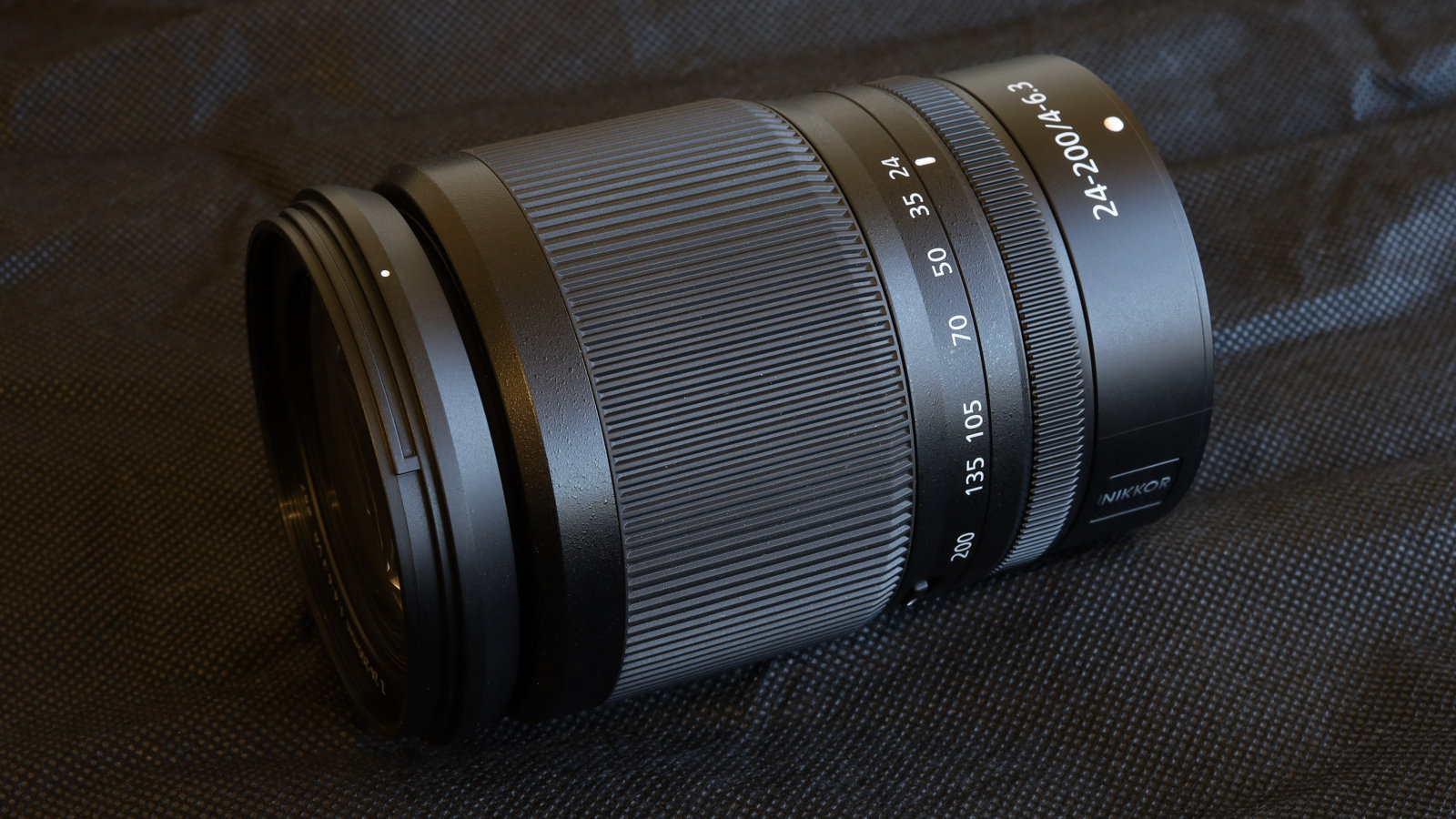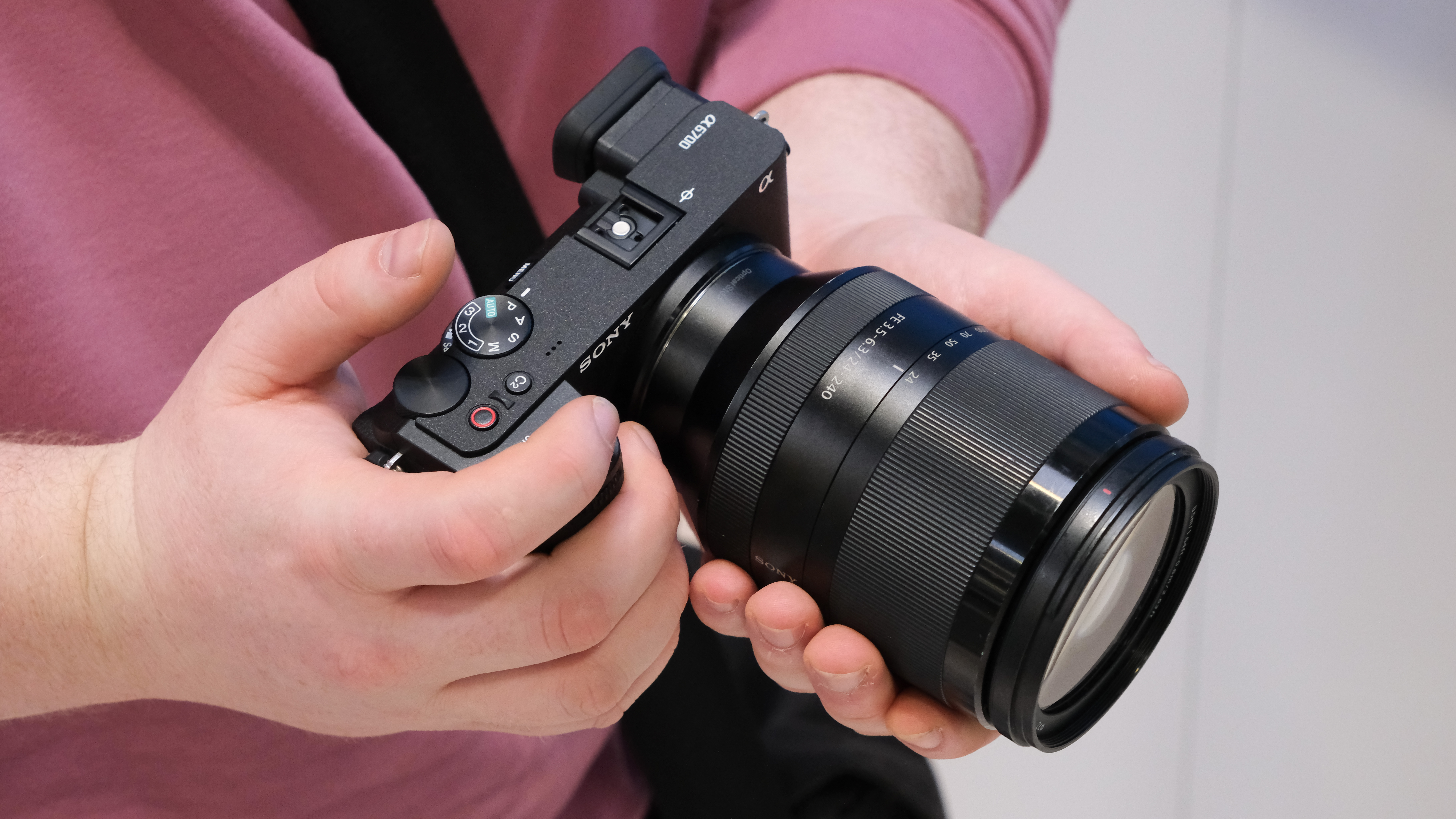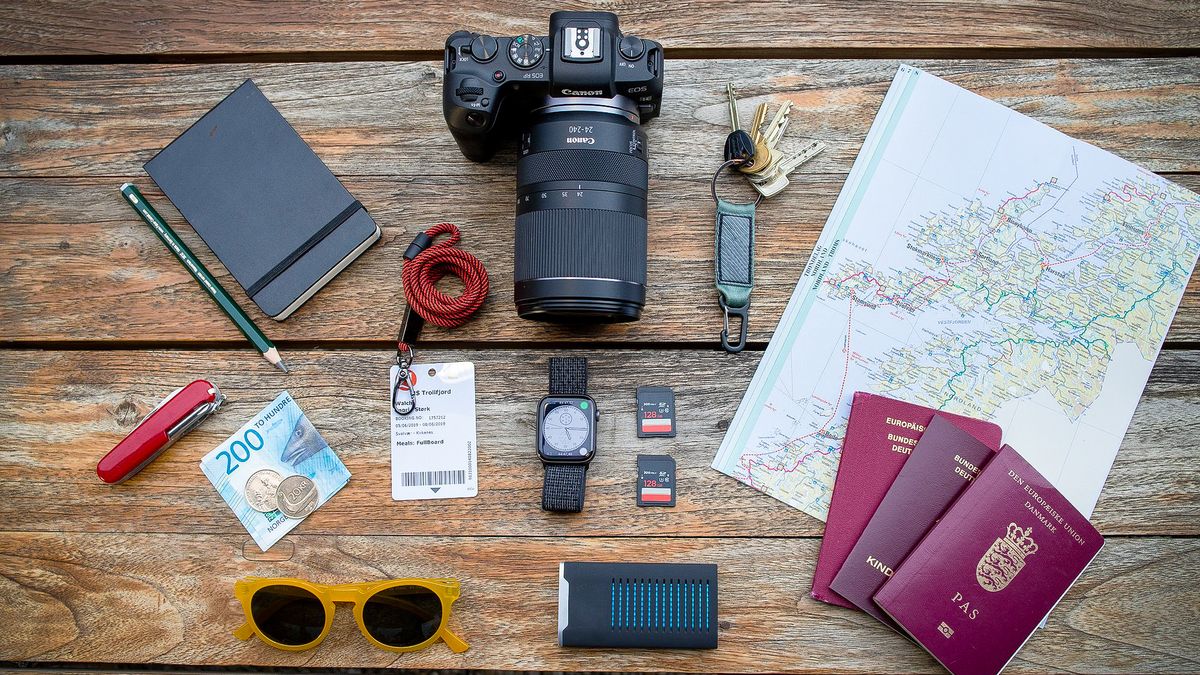The best lenses for travel photography will enable you to take amazing photos without weighing you down. Travel photography lenses are often versatile zooms that allow you to pack just one lens such as a superzoom but it all comes down to your shooting style and how much you want to carry.
With most of your bases covered, you can focus on snapping gorgeous landscapes, stunning sunsets or captivating portraits and the best part is if you choose to just take one lens with you, you’ll never have to faff with changing it.
When picking a superzoom lens, it’s tempting to go for the biggest zoom range you can get your hands on. However, such lenses tend to be quite large and weighty. They’re generally more convenient and less heavy than a combination of standard and telephoto zoom lenses but, when you want to travel light or go on walkabout, it’s nicer to have something smaller and more lightweight dangling off your camera strap.
Considering the 1.5x crop factor of most APS-C cameras (1.6x for Canon), a zoom range of around 18-200mm is generally ideal. This gives you similar wide-angle coverage as from a standard zoom, while stretching your telephoto reach to 300mm in full-frame terms (320mm for Canon).
Best lenses for travel photography in 2024
Why you can trust Digital Camera World
Our expert reviewers spend hours testing and comparing products and services so you can choose the best for you. Find out how we test.
Best travel lens for Canon mirrorless cameras

The best superzoom lens for Canon’s EOS R-series mirrorless cameras
Specifications
Mount: Canon RF
Autofocus: Ultrasonic (nano)
Optical stabilizer: 5-stop
Minimum focusing distance: 0.5m
Maximum magnification ratio: 0.26x
Filter size: 72mm
Dimensions: 80x123mm
Weight: 750g
Reasons to buy
Fast and virtually silent autofocus
+5-stop image stabilizer
Reasons to avoid
Hood not included
–Massive distortion if uncorrected
If you’re an EOS R-series shooter and want something with a longer focal range than the Canon’s two 24-105mm options, then you’re in luck as there’s also a superzoom option that isn’t overly big and heavy, and doesn’t cost silly money. It comes in the shape of the RF 24-240mm, which squeezes a very useful 10x zoom range into a reasonably lightweight and weather-sealed build. Further attractions include a Nano USM autofocus system which is super-fast for stills and enables smooth and virtually silent focus transitions during movie capture, and a highly effective 5-stop image stabilizer. At the short end of the zoom range, color fringing can be noticeable and barrel distortion is massive, but both of these aberrations are corrected in-camera by default, and when processing raw files. With this lens, Canon is combining optical and digital corrections rather than relying on optical corrections alone.
Read our full Canon RF 24-240mm f/4-6.3 IS USM review
Best travel lens for Nikon mirrorless cameras

Easily the best travel lens for full frame Nikon Z mirrorless cameras
Specifications
Mount: Nikon Z FX
Autofocus: Stepping motor
Optical stabilizer: 4.5-stop
Minimum focusing distance: 0.5-0.7m
Maximum magnification ratio: 0.28x
Filter size: 67mm
Dimensions: 77x114mm
Weight: 570g
Reasons to buy
Remarkably compact and lightweight
+Good zoom range
Reasons to avoid
Not on sale yet, but available for pre-order
–Pricey
–Typically narrow aperture at full zoom
The list of travel-friendly credentials for this soon-to-be-launched lens is long and impressive. It’s particularly compact and lightweight for a full-frame lens that boasts such an extensive zoom range, yet has a sturdy construction that includes comprehensive weather-seals and a fluorine coating on the front element to repel moisture and grease. Image quality benefits from the inclusion of two aspherical elements, one aspherical ED (Extra-low Dispersion) element and two further ED elements. Nikon’s high-tech ARNEO coating is also applied to minimize ghosting and flare. Not just for stills, the stepping motor-driven autofocus system enables smooth focus transitions during movie capture, along with minimal focus breathing and focus shift when zooming. Ideal, for full-frame Z-series cameras, the lens is also an interesting travel choice for the Z 50, where this camera’s 1.5x crop factor gives this lens an effective zoom range of 36-300mm.
Read our full Nikon Z 24-200mm f/4-6.3 VR review
Best travel lens for Sony cameras

3. Sony FE 24-240mm f/3.5-6.3 OSS
The best choice of travel lens for full frame Sony mirrorless cameras
Specifications
Mount: Sony FE
Autofocus: Stepping motor
Optical stabilizer: 3-stop
Minimum focusing distance: 0.5-0.8m
Maximum magnification ratio: 0.27x
Filter size: 72mm
Dimensions: 81x119mm
Weight: 780g
Reasons to buy
Powerful 24-240mm zoom range
+Includes Optical SteadyShot
Reasons to avoid
Lacks sharpness at longest zoom setting
–Stabilization is good rather than great
Although fully compatible with Sony’s APS-C format E-mount cameras, on which this lens has an effective focal length of 36-360mm, this lens really comes into its own on full-frame bodies. It’s typically weighty for a full-frame format superzoom but doesn’t feel overly large and has refined handling. The 10x zoom range kicks off at 24mm, enabling a generously wide maximum viewing angle, and there’s good telephoto reach at the long end. Based on a stepping motor, the autofocus system is quick and quiet, while Optical SteadyShot gives a benefit of around 3-stops in beating camera-shake. The optical path includes no less than five aspherical elements, plus one ED (Extra-low Dispersion) element. Image quality is mostly very good for a superzoom lens although corner-sharpness is a little lacklustre at the short end of the zoom range, and overall sharpness drops off at the long end.
Best travel lens for Fujifilm cameras

4. Fujifilm 18-135mm f/3.5-5.6 WR LM R OIS
The best travel lens option for Fujifilm X-mount cameras
Specifications
Mount: Fujifilm X
Autofocus: Stepping motor
Optical stabilizer: 5-stop
Minimum focusing distance: 0.45m
Maximum magnification ratio: 0.27x
Filter size: 67mm
Dimensions: 76x98mm
Weight: 490g
Reasons to buy
Useful 27-206mm effective zoom range
+Great handling and 5-stop stabilizer
Reasons to avoid
Lack powerful telephoto reach
From Fujifilm’s acclaimed XF stable of lenses for its APS-C format mirrorless X-mount cameras, this one has an impressive string of letters after its name. It’s a WR (Weather-Resistant) lens with no less than 20 areas of sealing in its construction. It features a fast and virtually silent LM (Linear Motor) autofocus system that’s super-fast for stills and smooth for movie capture. Handling is enhanced by the ‘R’ control ring, and it has a particularly effective 5-stop OIS (Optical Image Stabilizer). Quality glass includes four aspherical elements and two ED (Extra-low Dispersion) elements. The 7.5x zoom range is a little limited compared with some other travel lenses on the market but this helps to enable a relatively compact construction. Image quality is very impressive overall, although corner-sharpness is a little mediocre towards both ends of the zoom range.
Best travel lens for L-mount cameras

Best lens for travel for L-mount cameras
Specifications
Mount: L-mount
Stabilization: Yes (Dual I.S.2)
Min focus distance: 0.14m (@28mm)
Max magnification: 0.5x (@28mm)
Filter size: 67mm
Dimensions: 93.4mm x 77.3mm / 3.68inch x 3.04inch
Reasons to buy
Very compact and lightweight
+Useful range of focal lengths
+Good image quality throughout focal range
+Weatherproofed for traveling
Reasons to avoid
Not as sharp as primes or some shorter zooms
–28mm not ideal for macro
If you’re in search of a versatile travel lens for your Lumix S5, the Lumix S 28-200mm f/4-7.1 O.I.S. fits the bill perfectly. This lens stands out as the most compact and lightweight 7x superzoom lens available for any system, making it an ideal companion for travel without adding bulk or weight to your carry-on. Covering a range of commonly needed focal lengths, it’s a must-have addition to any Panasonic photographer’s gear collection.
While the focal length falls slightly shorter compared to other brands, limiting its versatility for sports and wildlife photography, the trade-off for its compactness is reasonable and easily accepted.
There are no compromises on image quality to be found here – the 28-200mm lens performs admirably, with only minor inconsistencies at the extreme end of the zoom. While it may not match the sharpness of prime or professional lenses, Panasonic has achieved commendable results for a lens of this category.
The standout feature of this Lumix S 28-200mm lens is its Dual I.S.2 image stabilization, combining optical stabilization with in-body stabilization. This system is among the best available, significantly enhancing stability for both still photography and particularly impressive results in handheld video shooting, even at 200mm.
Read our full Panasonic Lumix S 28-200mm f/4-7.1 Macro O.I.S. review
Best travel lens for Micro Four Thirds

MFT cameras are perfect for travel photography, and so is this lens!
Specifications
Mount: Micro Four Thirds
Autofocus: Stepping motor
Optical stabilizer: 4-stop
Minimum focusing distance: 0.3-0.5m
Maximum magnification ratio: 0.25x
Filter size: 58mm
Dimensions: 67x75mm
Weight: 265g
Reasons to buy
Super-small and lightweight
+10x zoom range, optical image stabilizer
Reasons to avoid
Olympus 12-200mm goes even longer!
Micro Four Thirds format travel zooms from Olympus include the budget-friendly 14-150mm II and the up-market 12-200mm. They’re both very desirable lenses but we prefer this Panasonic option, which splits the two Olympus zooms for selling price, while adding a highly effective 4-stop optical image stabilizer. Thanks to the 2x crop factor of Micro Four Thirds cameras, the effective zoom range is 28-280mm in full-frame terms, thereby nearly matching 18-200mm lenses on APS-C format cameras. It delivers this in a remarkably compact package that weighs a mere 265g. That’s only about half the weight of some APS-C format 18-200mm lenses, making the Panasonic particularly travel-friendly. Even so, it packs a fast autofocus system and quality glass, including three aspherical elements and two ED (Extra-low Dispersion) elements. For a superzoom lens, sharpness is both very good and highly consistent throughout the entire zoom range.
Read our full Panasonic LUMIX G VARIO 14-140mm f/3.5-5.6 II ASPH Power OIS review
Best travel lens for Canon DSLR cameras

Best travel lens for full-frame Canon DSLRs
Specifications
Effective zoom range: 24-105mm
Lens construction: 17 elements in 12 groups
No. of diaphragm blades: 10 blades
Minimum focus distance: 0.45m
Filter size: 77m
Dimensions: 84x118mm
Weight: 795g
Reasons to buy
Extensive weather-seals
+Four-stop image stabilizer
+Constant aperture value
Canon does make a proper full-frame superzoom travel lens – the EF 28-300mm f/3.5-5.6L IS USM – so why have we picked this 24-105mm instead? Quite simply, this is a better travel lens. At 795g, it’s less than half the weight of the 28-300mm, so is much more travel-friendly, and it’s also about half the price. That still doesn’t make it cheap, but at least you can feel a little less conspicuous.
The new Mk II version of the EF 24-105mm f/4L IS has been redesigned to be tougher and more resistant to shock and vibration, and it features fluorine coatings on the front and rear elements. More importantly, the optics have been revamped, with the aim of improving sharpness across the whole image frame, throughout the zoom range.
Barrel distortion from the preceding 24-105mm lens was notoriously bad at the short end of the zoom range, but the Mk II performs a little better. It’s also a bit sharper, autofocus is a little quicker and bokeh is smoother, thanks to the fitment of ten, rather than eight, diaphragm blades. Overall, however, each of the improvements is quite subtle rather than making a hugely noticeable difference.
Read our full Canon EF 24-105mm f/4L IS II USM review
Best travel lens for Nikon DLSR cameras

The ideal travel lens for full-frame Nikon FX format DSLRs
Specifications
Mount: Nikon F FX
Autofocus: Ultrasonic (ring)
Optical stabilizer: 3.5-stop
Minimum focusing distance: 0.45m
Maximum magnification ratio: 0.24x
Filter size: 77mm
Dimensions: 84x104mm
Weight: 710g
Reasons to buy
Extra wide-angle coverage
+Impressive handling and image quality
Reasons to avoid
Relatively limited zoom range
–Lacks long telephoto reach
Nikon and Tamron have both manufactured 28-300mm superzoom lenses for many years, offering a travel-friendly option for Nikon full-frame SLRs. There’s not a lot to choose between them for handling, image quality and all-round performance. Both are good rather than great. To make the most of Nikon’s recent full-frame SLRs, it pays to set your sights rather lower in terms of zoom range, and to go for quality instead. The latest edition of Nikon’s 24-120mm VR is our first choice. It’s relatively compact and has excellent handling characteristics. It also gives you more a generous wide-angle perspective at the short end of the zoom range. The flipside, naturally, is that you’ll lose out on powerful telephoto reach, but that’s often less useful than you expect anyway.
Read our full Nikon AF-S 24-120mm f/4G ED VR review
How we test travel lenses
We test lenses using both real world sample images and lab tests. Our lab tests are carried out scientifically in controlled conditions using the Imatest testing suite, which consists of custom charts and analysis software that measures resolution in line widths/picture height, a measurement widely used in lens and camera testing. We find the combination of lab and real-word testing works best, as each reveals different qualities and characteristics.










